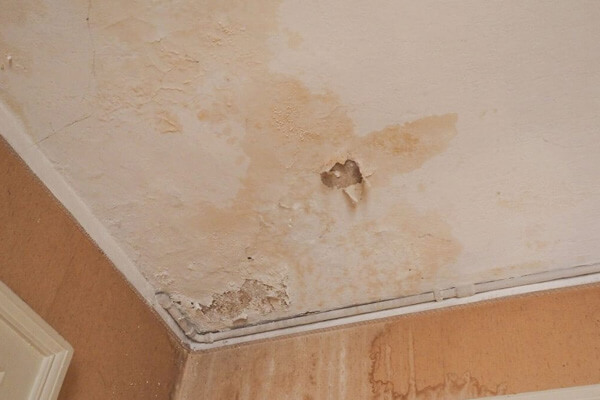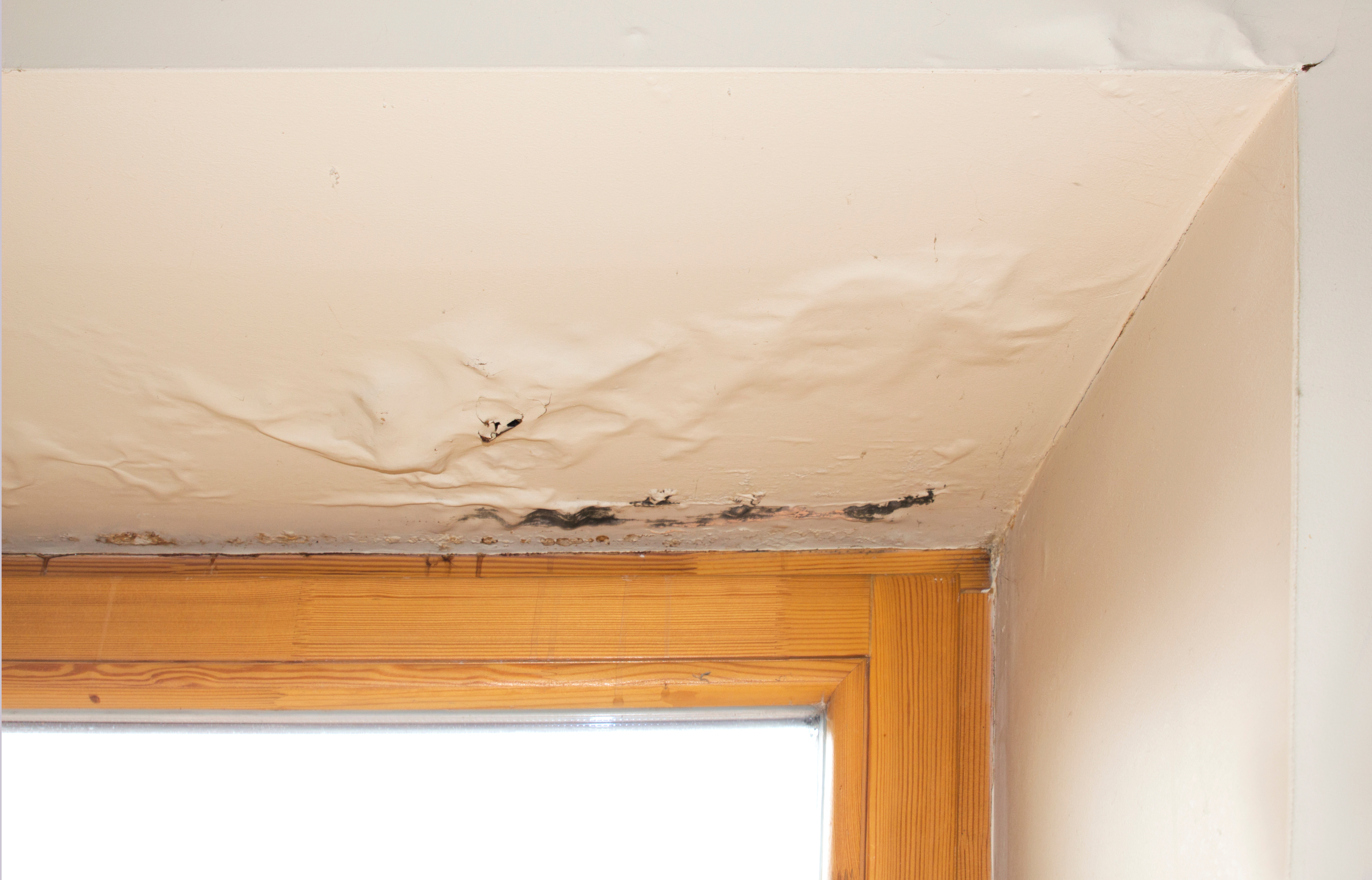We have stumbled on the article involving Indicators of Water Damage Behind Walls listed below on the internet and think it made good sense to talk about it with you here.

Water spots on walls are not pleasant to the eyes. Occasionally it seems almost unpreventable to experience water spots on walls in residences.
Homeowners living in damp regions frequently deal with the worry of water discolorations on wall surfaces. With well-rounded as well as exact information on the reasons of water stains as well as prompt repair service processes, you will certainly always be a step in advance of such occurrences.
3 Typical Sources Of Water Stains on Walls
Unlike popular belief, water spots on wall surfaces do not constantly stem from bad structure materials. There are numerous reasons for water discolorations on walls. These consist of:
Wet
When hot wet air meets with completely dry cool air, it triggers water beads to form on the wall surfaces of structures. This happens in bathrooms as well as kitchen areas when there is vapor from cooking or showers. The water droplets can discolor the bordering walls in these parts of your home as well as infect various other areas.
Wet or condensation influences the roof covering and also wall surfaces of structures. When the wall surface is damp, it develops an ideal setting for the development of germs and also fungis.
Poor Water drainage
When making a structure strategy, it is vital to make sure appropriate water drainage. This will certainly stop water from permeating right into the wall surfaces. Where the water drainage system is obstructed or missing, below ground wetness develops. This links to excessive wetness that you see on the wall surfaces of your structure.
So, the leading source of damp wall surfaces, in this situation, can be a poor drainage system. It can also be due to poor monitoring of sewer pipelines that go through the building.
Pipe Leaks
The majority of houses have a network of water pipes within the walls. It always raises the feasibility of such pipes, as there is little oxygen within the walls.
Yet, a downside to this is that water leak impacts the walls of the structure and also triggers widespread damage. A dead giveaway of defective pipelines is the appearance of a water stain on the wall surface.
Pro Tip
A houseplant in your house also raises its humidity. So, if your house is already moist, you may intend to introduce houseplants with marginal transpiration. An example of suitable houseplants is succulents.
Water Discolorations on Wall Surface: Repair Work Tips
When dealing with water discolorations, property owners would generally desire a quick fix. Yet, they would certainly soon realize this is disadvantageous as the water spots reoccur. Here are a couple of helpful suggestions that will certainly guide you in the repair work of water discolorations on walls:
Conclusion
Although nobody intends to have water discolorations on walls in their home, it can occur to the most effective of us. This write-up gives you leverage, as you now understand exactly how to manage this problem if it does take place.
It is constantly best to hire specialist services to help fix the problems in your house.
Sometimes it seems almost unpreventable to experience water discolorations on wall surfaces in residences.
In contrast to prominent belief, water stains on wall surfaces do not constantly stem from inadequate structure products. There are numerous reasons of water discolorations on wall surfaces. The water beads can discolor the bordering wall surfaces in these parts of your house and spread to other areas.
Below are a couple of handy pointers that will certainly assist you in the repair service of water spots on walls:
What To Do About A Water Stain On The Ceiling
Why This is Important
Not only are water stains a cosmetic issue, but they can also indicate that there is a leak in the home that needs to be fixed. Sometimes, this may be the first indicator of a bigger problem brewing or may have been a one time leaky issue. It is important to investigate to make sure it is under control before you possibly have thousands of dollars in repairs.
Identify the Cause of the Water Stain on the Ceiling and Where to Start
It is important to identify the cause of the water stain on the ceiling first so you can fix it. Start first with the roof to see if there are leaky shingles or missing shingles, missing flashing, or weakened seals around roof vents. You may need to get on top of the roof to look or call a professional to check for you. It is possible that water is coming into the home from the roof. So you will want to have the professional take a look to see if this is the issue.
Also, look in the attic to see if there is a pool of water and that will also help you to know if there is water leaking into the home.
Radiator or Air Handler on 2nd floor
In colder parts of the country, there may be a radiator on the second floor. Radiators are used to keep rooms warm in the cold months and do wear out or need replacing. Does the radiator have a pool of water underneath it or any dripping? If yes, this could be the problem and causing the water stain on the ceiling. Check the model of the radiator and see if it is something you can do yourself or call a professional to check the body, pipe, and the valve for leaks.
The same is true for those who have an air handler on the second floor. Did your AC stop working? Or do you see water leaking? The drip pan (if you have one) on an HVAC unit collects the water and it can become clogged and back up. The float switch (again, if you have one) will activate as soon as the water reaches a certain level and shut down the HVAC unit, thus not allowing the water to continue to flow. Make sure the HVAC doesn’t become clogged and checking this monthly is a good idea.
Upstairs Bathroom Can Cause a Water Stain on the Ceiling
Bathrooms are often the culprit as caulking wears out after about 10 years and needs replacing. Is the home older than 10 years? This may be the issue. While checking the caulking in the bathroom around the sinks, toilets, and shower/bath, also check for black mold in the shower. Might as well rule everything out while you are looking for the source.
Other areas to look at are toilets clogging and overflowing. Do you see water near the toilet on the floor? This could be the seal is broken on the toilet and it needs replacing. Also, adding caulk to the toilet to connect it to the floor is a good idea. If the toilet is continuously running, you can shut off the water and do the water meter test.
Write down the number on the water meter and then turn off the water for three hours. When you turn it back on, check the number on the water meter. If it has increased, then you have a leak in the indoor plumbing.
Taking care of these areas is essential as sewer gases can also be escaping. Sometimes these issues will soak the ceiling below and clog in sinks and drains in the shower can also cause flooding in a bathroom.
Put a Drop Cloth on the Floor
With goggles on and gloves, put a drop cloth on the floor. Then, take 3 glasses of warm water and one cup of bleach and mix it together. Set up a ladder and climb up to the stain. Use a sponge that is soaked in the concoction to rub it on the water stain to get it to come off. Take a spray bottle of plain water and spray the stain to get the bleach mixture off. This is important because you want to be able to prime it and paint it. Take a dry towel and rub the stain to help it dry faster. Next, put painters tape around the ceiling if the spot is near the walls. Apply an Oil Based, Stain Blocking Primer
Apply an oil based, stain blocking primer that is mold resistant that matches the ceiling. It is important to put the primer on first so the paint doesn’t soak into the ceiling. If you have a flat ceiling, you can use a paint roller with an extension to apply it. Once the primer has dried, apply the paint. If you have a textured ceiling, a spray on primer might work better.
Choose a Latex or Alkyd Ceiling Paint
The latex ceiling paint is water-based and dries faster than the oil-based paints and also is thicker than wall paint. Make sure that the paint matches the ceiling color. Using a roller, paint it on over the primer and let it dry for up to four hours. Then, apply a second coat and let it dry. The second coat should make the stain disappear.
https://insideandoutpropertyinspectors.com/water-stain-on-ceiling/

Hopefully you enjoyed reading our section about How to Remove Water Stains from Walls and Ceilings. Thanks for taking time to browse our article. In case you liked our blog entry if you please do not forget to pass it around. Thanks a lot for your time. Come back soon.
Request Service